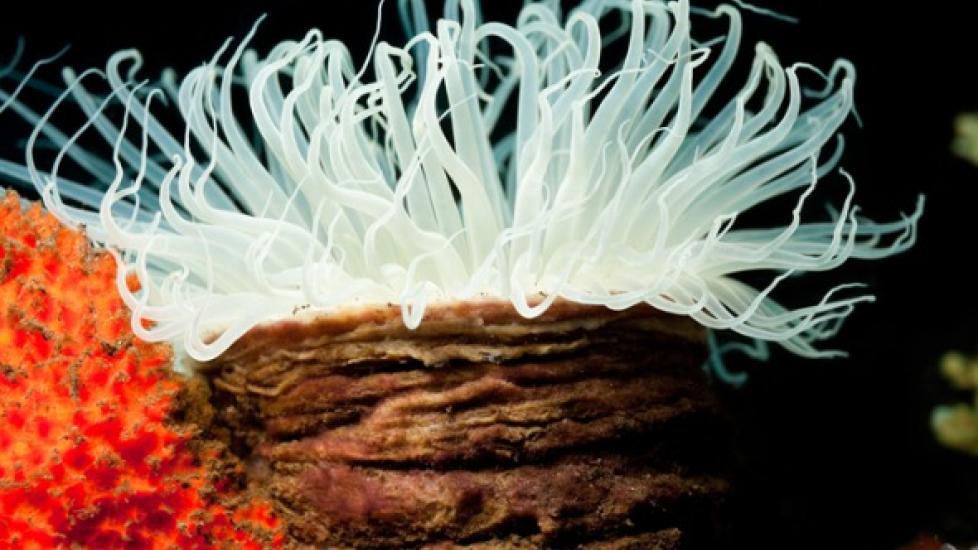How to Care for Tube Anemones (Subclass Ceriantharia)
As reef aquarists progress in the hobby, their eyes and hearts are drawn to increasingly unusual animals. Indeed, after mastering the care of corals (no small feat in itself), one might find themselves looking for new challenges as well as novel species.
Some species are not only desirable in their uniqueness but are also quite attractive. Among these, some are even relatively hardy and easy to care for. One such animal is the tube anemone.
What Is a Tube Anemone?
So, let us get one thing straight right from the start: Tube anemones are not anemones.
Cerianthids do superficially resemble the distantly related "true" sea anemones (Order Actinaria). Although they also belong to the Hexacorallia, they are placed in the Order Ceriantharia. The order is made up of around 25 species in three families.
Cerianthids are most different from sea anemones in that they lack a pedal disc (i.e., the adhesive foot). Instead, they possess a long, taproot-shaped foot that is capable of penetrating soft substrates. The foot is usually buried in mud, sand or gravel; however, in rarer cases, it can tunnel between rocks or in deep, rocky pits.
The group's common name comes from the protective tube that they build. The tube may be much longer than the animal itself. This slimy, stringy duct is made from mucus and specialized cnidae threads (i.e., ptychocysts). Other materials such as sand can become embedded in and become part of the tube.
The inside surface of the tube is rather smooth and slippery, easing movement of the creature within. The tentacular crown emerges from the top end of the tube. When threatened, the animal can immediately slip away from harm into the safety of the subsurface tube.
Tube anemones can be very brightly colored. Colors are highly variable (sometimes even within a given species). Exceptionally beautiful fluorescent greens, purples and oranges are common in aquarium import specimens.
Natural Habitat
Tube anemones occur widely across tropical, subtropical and temperate oceans. For the most part, Cerianthus is distributed across the Mediterranean, and Pachycerianthus is distributed across the Indo-Pacific, while Arachnantus is distributed across the Caribbean.
Tube anemones are generally not found directly on coral reefs. They instead prefer sandy or muddy flats between coral reefs or rocky reefs.
While some water flow helps to bring food to them and carries away their wastes, they do not prefer areas with strong currents, which can unsettle the soft bottoms.
Though considered to be sessile (anchored in one place), tube anemones relocate by crawling out of their tube and drifting across the seafloor until digging in to a better site.
They can be rather abundant where there is plenty of food (zooplankton and organic detritus).
Aquarium Care
Cerianthus membranaceus is presently the most commonly offered tube anemone species in the trade. Weird as they are, these and most other tube anemones are not especially difficult to care for in captivity.
Aquarium Lighting
For one, they are completely non-photosynthetic (unlike most corals) and thus do not require any particular sort of lighting. They are also fairly adaptable and can tolerate common fish aquarium stressors about as well as most corals do.
Food
Moreover, they are not very picky when it comes to food and will accept a wide variety of aquarium fare ranging from live brine shrimp to prepared diets, such as Wardley shrimp pellets.
Housing
If there is just one thing that a captive tube anemone will appreciate, it is a deep bottom cover.
Most marine aquarium sands (such as CaribSea Arag-Alive live aragonite reef sand) will suffice as material. It can be as deep as you are willing to make it. Remember, though, that the depth is ideally greater than the length of the animal's tube, which can easily exceed 6 or 7 inches.
Few aquaria, of course, use a substrate anywhere near this deep. This means that a few tricks will need to be employed in order to provide a proper sea bed to burrow into.
One such approach is to fill a deep pocket in the rockwork with sand. Another approach is to house tube anemones in a refugium, where deep sand beds are a bit more common and a lot more feasible. The last resort might be filling a flower pot with sand and hiding it within the hardscape.
Though they are somewhat sturdy aquarium invertebrates, tube anemones require good water quality for long-term health. Water parameters should be checked regularly with a reliable test kit such as the API reef aquarium master test kit.
Tank Mates
Give your tube anemone plenty of space. Though the potency of their sting has been greatly exaggerated by some (it's less dangerous than most true sea anemones), cerianthids do indeed bear nematocysts and should not be allowed to come into contact with other animals.
With their bright colors and distinctive shape, tube anemones add more than a little flair to just about any saltwater aquarium. Resilient and undemanding, they provide a lot of rewards for minimal care and fuss. Given a good footing with a deep, fine sand/mud bed, a tube anemone can live happily for decades in captivity.
By: Kenneth Wingerter
Featured Image: iStock.com/ifish
